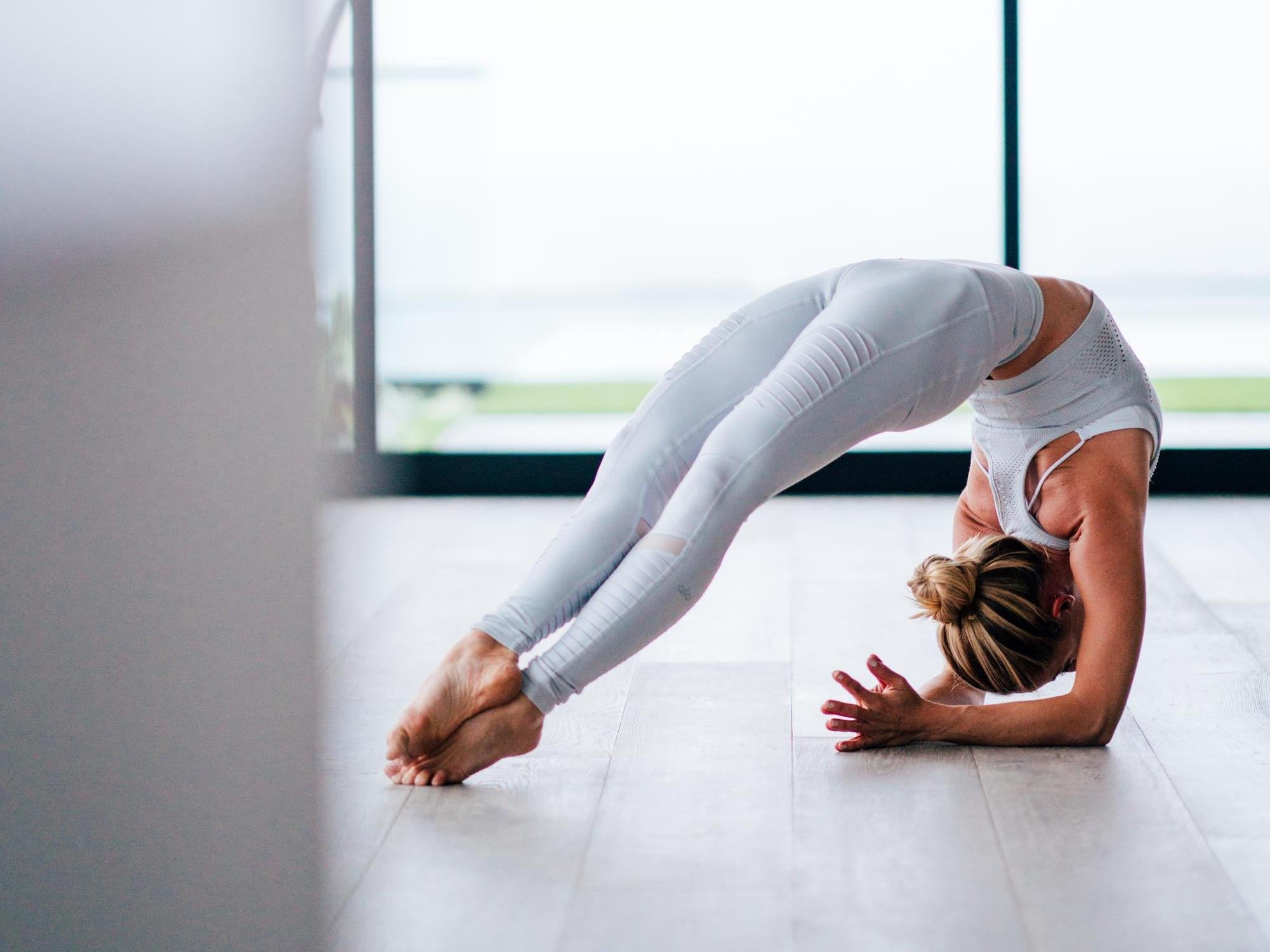Pose Breakdown: Two-Legged Inverted Staff Pose
See your practice from a different perspective. Two-Legged Inverted Staff Pose (Dwi Pada Viparita Dandasana) is an upside-down version of what you might know as Forearm Plank, but with a big backbend thrown in — it looks like Wheel Pose on your forearms. While you might find it in advanced Vinyasa classes and in other yoga styles, Ashtanga practitioners may recognize it from the Advanced Series.
This intermediate-to-advanced backbend is a dramatic, anxiety-busting heart-opener that strengthens your whole body while giving you a much-needed boost of energy. Add it to your regular practice as a peak pose or on your way up to One-Legged Inverted Staff or Headstand. Make sure you’ve stretched before attempting this pose — your spine will thank you!
Benefits of Two-Legged Inverted Staff Pose
Opens your chest, shoulders, and hips
Strengthens and tones your upper and lower body
Boosts your energy
Helps to relieve stress and anxiety
Improves lung capacity and digestion
When to Avoid Two-Legged
Inverted Staff Pose
Avoid this pose if you have neck or spinal injuries, or if you have a headache.
Warm-Up Poses for Two-Legged
Inverted Staff Pose
Seal Pose
Bridge Pose
Fish Pose
Upward Plank Pose
Check out the full library of our yoga pose breakdowns.
How to Do Two-Legged Inverted Staff Pose (Dwi Pada Viparita Dandasana)
Start on your back with your knees bent, your feet hip-distance apart, your toes pointing forward, and your shins straight.
Lift your hips and raise your arms with your palms up, then plant your hands next to your ears with your fingers pointing slightly out.
Push down through your hands and feet and come onto the crown of your head.
Lower one forearm down at a time and interlace your fingers behind your head. Make sure your elbows are shoulders-distance and firm your elbows toward your midline as you squeeze your inner thighs in.
Push down through your elbows and lift your head up off the ground, pressing your chest toward the gateway of your shoulders and bringing your weight into your elbows.
To shorten and deepen your stance, bring your feet closer to your hands.
For the one-legged variation of this pose, balance on one foot with your heel down and reach your other foot up toward the sky.
Follow-Up Poses for Two-Legged
Inverted Staff Pose
One-Legged Inverted Staff Pose
Knees to Chest (Apanasana)
Seated Forward Fold
Bound Angle Pose
Child’s Pose
How to Modify Two-Legged
Inverted Staff Pose
(Dwi Pada Viparita Dandasana)
If you’re not quite ready for the full expression of the pose — or if it’s not for you — this pose can be practiced using a short stool as a prop to hold up your backbend. Put a blanket over it if it’s a hard surface!
Dwi Pada Viparita Dandasana’s meaning
In Sanskrit, “dwi” means “two,” “pada” means “legs” or “feet,” “viparita” means “reverse” or “inverted,” and “danda” means “staff,” and “asana” means “pose,” “posture,” or “seat.” Two-Legged Inverted Staff Pose is a pretty direct translation of the Sanskrit name.
This pose first appears in Pattabhi Jois’s Ashtanga Yoga Advanced Series and BKS Iyengar’s Intermediate Series, so it’s likely that it came from the teachings of their mutual guru Turimalai Krishnamacharya.
Want to level up your backbend practice? Try Kayla Nielsen’s Deepen Your Backbends series, available for free with a 14-day trial to Alo Moves.

